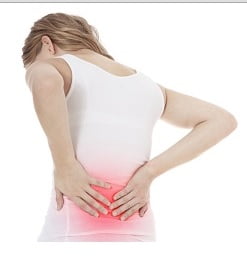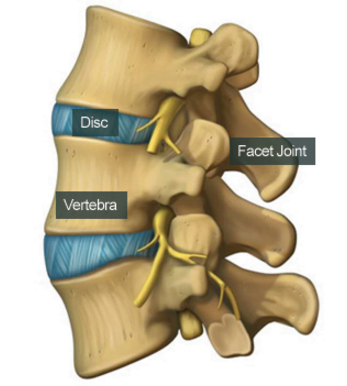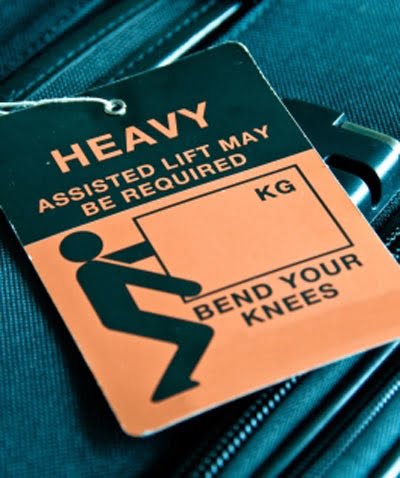A Patient’s Guide to Low Back Pain
(Please note this article is intended for information only, it is not intended as a diagnosis for pain, if you have symptoms that are undiagnosed then you must seek advice from a professional before taking any action).
Low back pain (pain below the lowest ribs and above the thighs) is the biggest reason for disability and missed days of work in the world (1).
 At least one in ten of us are suffering it right now and 4 out 5 of us will suffer it at some point in our lives (2) making it one of the most common reasons to seek medical help (3). Women are more likely to suffer than men and the risk increases as we age, peaking around our 60th birthday (4).
At least one in ten of us are suffering it right now and 4 out 5 of us will suffer it at some point in our lives (2) making it one of the most common reasons to seek medical help (3). Women are more likely to suffer than men and the risk increases as we age, peaking around our 60th birthday (4).
What causes it?
The causes of low back pain are varied and many are still poorly understood (4), however we know that nearly all (97%) is caused by ‘structural’ elements (5). There are many complex structures in the low back, nearly all of which are capable of producing pain, these include the muscles, ligaments, discs and joints. If you are suffering back pain it could be one of these or a combination of these structures that is struggling. Most commonly there has been some damage (sometimes very slight) which causes inflammation in the pain sensitive structures of the back causing the pain.
Most commonly there has been some damage (sometimes very slight) which causes inflammation in the pain sensitive structures of the back causing the pain.
If your back pain is accompanied by shooting pains in either or both legs then there it is possible that a nerve is being affected. The catch-all term for this is sciatica (see below), although it may not be the sciatic nerve that is affected as other nerves in the legs and thighs can be affected.
What increases my risk of low back pain?
Over working the low back
Either by lifting something too heavy, or participating in an activity that you are not used to for a prolonged period of time. Common examples of these are lifting luggage, gardening, decorating or even just walking more than you are used to (3).
Repetitive actions
Doing the same repetitive movements over days, weeks or even years, such as twisting and bending. This will eventually change how the back moves and performs which may result in pain (4).
Prolonged sitting
Mainly related to desk jobs with unsuitable chairs and desks. If the low back is not properly supported it may, over time, cause damage to the discs in the back, eventually producing pain.
Lack of fitness
The low back depends on strong musculature around the waist for adequate support and strength, people who lack strength or do not take regular exercise are more likely to suffer back pain (6).
How can I guard against getting low back pain?
There are several things you can do to protect yourself from getting back pain;
Exercise!
There is moderate evidence to say that even walking regularly will help prevent back pain (7). Exercise in general is recommended although there is no evidence to suggest that any duration/intensity or type is superior (8).
Sit well!
Any extreme sport needs the right kit, sitting all day is an endurance event so have a good chair and a good desk. Set these bits of kit up correctly, you can find the Health and Safety Executive’s checklist here (or we can provide a simpler version on request). Or even better, don’t sit for too long.
%27%20fill-opacity%3D%27.5%27%3E%3Cellipse%20fill%3D%22%23ffaf6b%22%20fill-opacity%3D%22.5%22%20rx%3D%221%22%20ry%3D%221%22%20transform%3D%22rotate(-75.9%20155.8%20-19.4)%20scale(54.17125%2074.95074)%22%2F%3E%3Cellipse%20fill%3D%22%23004250%22%20fill-opacity%3D%22.5%22%20rx%3D%221%22%20ry%3D%221%22%20transform%3D%22rotate(-89.9%2059%20-26.2)%20scale(41.2879%20202.00002)%22%2F%3E%3Cpath%20fill%3D%22%23002b48%22%20fill-opacity%3D%22.5%22%20d%3D%22M-29.1%20261.7l-3.2-45.9L204%20199.3l3.2%2045.9z%22%2F%3E%3Cellipse%20fill%3D%22%23b7561b%22%20fill-opacity%3D%22.5%22%20rx%3D%221%22%20ry%3D%221%22%20transform%3D%22matrix(-37.63572%201.91315%20-1.63345%20-32.13356%2085%20177)%22%2F%3E%3C%2Fg%3E%3C%2Fsvg%3E) Lift well!
Lift well!
Does your job involve lifting? Do you need to do a lot of lifting at home? If so take care. Your body has several muscles and joints which it uses to lift objects from the floor, use them! If it is too heavy, get help. You can find the Health and Safety Executive’s guidelines here, but if we had to boil it down we would say, use your legs, keep the weight close to you and if you have to turn, turn with your legs, not twist with the back (very important that last one).
What doesn’t work?
There is no evidence to say that the use of lumbar supports or any specific type of mattress is preferable, or orthotic inserts for shoes (although these last two items may help if you struggle with ongoing back pain) (8).
What can I do if I have low back pain?
Firstly, don’t panic. Even if the pain is severe 97% of all back pain is mechanical, meaning it’s a problem with how the back moves as opposed to structural damage (3). If the pain has occurred very recently (acute pain) then 90% of people will be mostly better within 1 month (4). Another 5% will be mostly better in 3 months (sub-acute), however both these groups will have a 33% chance of experiencing more episodes (3). The last 5% will progress in to the chronic (+3 months) phase where progress can be less predictable. If your pain is accompanied by fever or feeling unwell then you need to speak to your doctor.
Secondly, stay active.
By that we don’t mean go running or go the gym but don’t lie on the sofa for weeks on end, continue daily activities including going to work if possible (9).
Thirdly, get a diagnosis.
Visit a health professional such as an osteopath or your doctor to find out what the problem is, only then can you make a decision on what to do.
What if it doesn’t get better? Or the pain is too much to bear?
Luckily there is plenty of help available, and lots of evidence to say what is beneficial. If the pain is too much to bear even for a short time then get to your doctor/call the 111 helpline and see if you can get some pain killers, they can advise you on the best type for you.
Get help from an osteopath, osteopaths deal with these types of problems on a daily basis and there is good evidence that osteopathic techniques in general can reduce back pain and speed recovery (10). We regularly treat patients with low back pain helping them get pain free and live an active life again. Several techniques used by osteopaths have been shown to benefit sufferers of low back pain. There is good evidence to show that soft tissue manipulation (massage) can help with low back pain, especially if it is combined with acupuncture and exercises prescription (11). It tends to be more effective for those people who have been in pain for over a month. Spinal manipulation or mobilisation, where an osteopath moves the joints in the back that may be causing the pain has been shown to make a small difference to the reduction of chronic pain in the short term (12). However, continued maintenance treatments may also keep the pain at bay (13).
What is our experience as osteopaths?
Low back pain is the most common symptom we treat; usually we will see several patients a day complaining of low back pain. Our experience fits with the evidence listed above in so far as not every technique suits every patient. Our choice of technique and treatment style is decided by the individual symptoms and needs of each patient. At Align Body Clinic we use a mix of techniques for low back pain, hands on treatment such as massage, acupuncture and spinal manipulation. We also prescribe tailored exercise programmes which can help in the short term and help prevent relapses (14).
In our experience, the patients that get better quickest and have the best outcomes are the ones that get help quickly, comply with any exercise program prescribed and make changes to the habits that got them there in the first place.
Do you want to know what is causing your pain and if we can help? Why not take advantage of our new patient assessment introductory offer to get you started towards a tailor made recovery plan for only £19.
Are you in a lot of pain and want to get better as soon as possible? If so then why not book in for a new patient consultation, with treatment on the day, for £75.
We are also there to help you from home. Take a look at our suite of exercise resources and advice sheets which you can easily download and use from home.
References
1 – Hoy et al (2014). The global burden of low back pain: estimates from the Global Burden of Disease 2010 study. Available at http://ard.bmj.com/content/early/2014/02/14/annrheumdis-2013-204428.abst…
2 – CBI/Pfizer, 2010. Absence and Workplace Health Survey. [online] ,available at; http://www.cbi.org.uk/media/2150120/cbi-pfizer_absence___workplace_healt…
3 – Seffinger, M. and Hruby, R., 2007. Evidence Based Manual Medicine – A Problem Based Approach. Philadelphia, Elselvier.
4 – Magee, D. Zachazewski, J. and Quillen, W., 2009. Pathology and Intervention in Musculoskeletal Rehabilitation, Missouri, Elselvier.
5 – Deyo, R. and Weinstein, J., 2001. Low Back Pain. New England Journal of Medicine, vol 344, pp363-370.
6 – National Institute of Neurological Disorders (2015). Low Back Pain Guidelines, available at http://www.ninds.nih.gov/disorders/backpain/detail_backpain.htm#282313102.
7 – Hendrick et al (2010). The effectiveness of walking as an intervention for low back pain: a systematic review. European Spine Journal, 19(10), pp1613.
http://www.hseni.gov.uk/vdu_workstation_checklist.pdf
8- European Guidelines for Prevention of Low Back Pain (2004). Available at, http://www.backpaineurope.org/web/files/WG3_Guidelines.pdf.
9 – Van Tulder et al (2006). Chapter 3. European guidelines for the management of acute nonspecific low back pain in primary care. Eur Spine J. 2006 Mar;15 Suppl 2:S169-91. Available at, http://www.backpaineurope.org/web/html/wg1_results.html
10 – Licciardone et al (2006). Osteopathic manipulative treatment for low back pain: a systematic review and meta-analysis of randomized controlled trials. BMC Musculoskelet Disord. 2005; 6: 43. Available at, http://www.ncbi.nlm.nih.gov/pmc/articles/PMC1208896/.
11 – Furlan, A. Immamura, M. Dryden, T. and Irvin, E., 2008. Massage for low back pain. Cochrane Database of Systematic Reviews. [online], available at, http://onlinelibrary.wiley.com/doi/10.1002/14651858.CD001929.pub2/abstract.
12 – Rubenstein, S. M., et al (2013). Spinal manipulative therapy for chronic low back pain, [online], available at http://onlinelibrary.wiley.com/doi/10.1002/14651858.CD008112.pub2/abstract
13 – Senna, M. and Machaly, S. (2011). Does maintained spinal manipulation therapy for chronic non-specific low back pain result in better long term outcome? Spine, Vol 36, No 18, pp1427-1437.
14 – Choi et al (2010). Exercises for prevention of recurrences of back pain. Cochrane Library, available at, http://onlinelibrary.wiley.com/doi/10.1002/14651858.CD006555.pub2/abstract.

 Lift well!
Lift well!